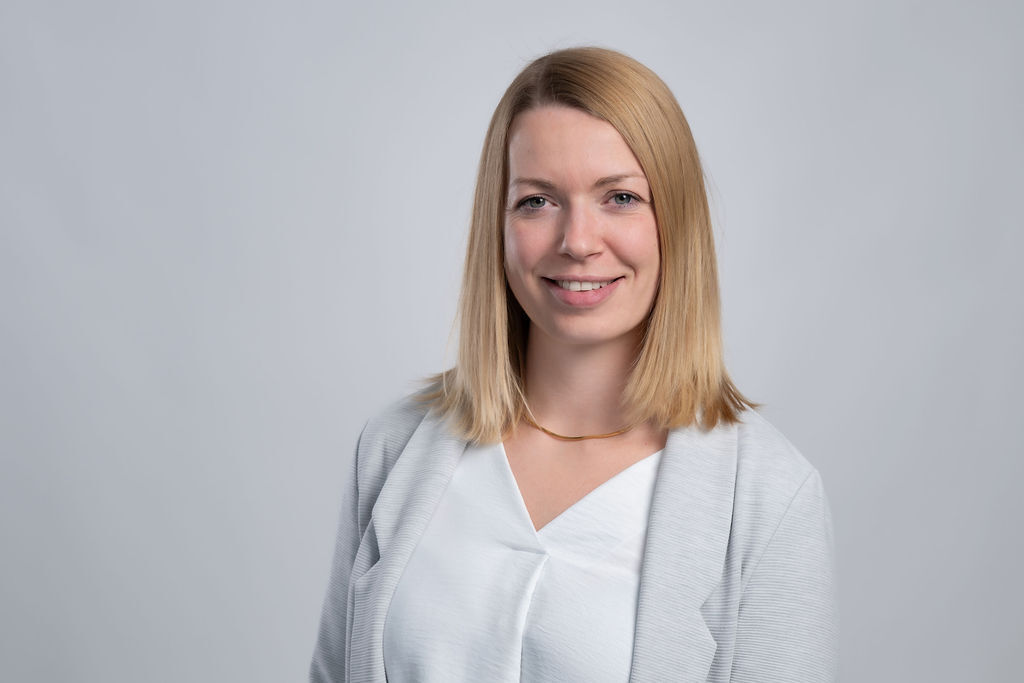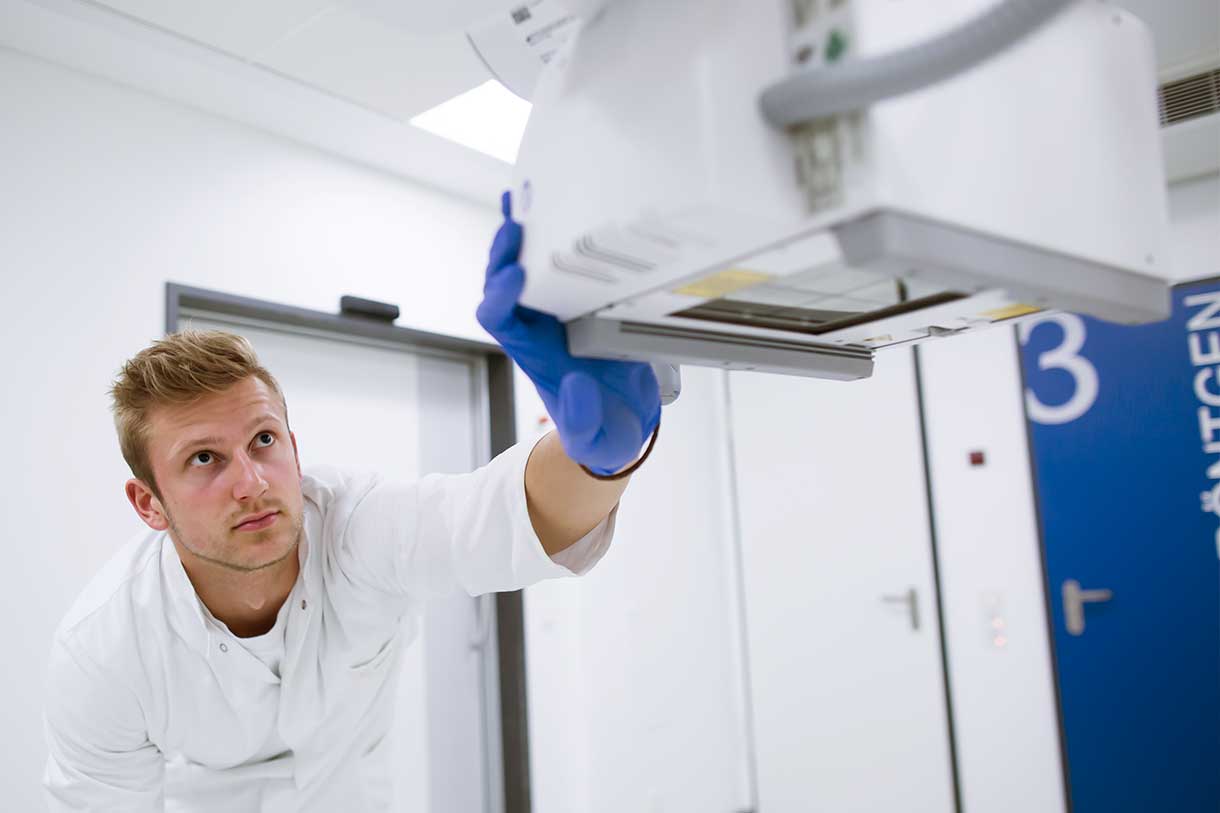Inhaltsverzeichnis | Sommaire
An AI tool was used to translate this article from German.
CIRS reporting system and patient safety: Quality management in Spitex and long-term care
In the ever-changing Swiss healthcare landscape, Spitex organisations and long-term care facilities are faced with the challenge of ensuring the highest standards of care while meeting regulatory requirements. A central component of this are professional digital CIRS reporting systems (Critical Incident Reporting System), which contribute to patient safety and continuous improvement and thus improve quality management in the healthcare sector.
Today, we are pleased to present our expert discussion with Jennifer Kummli, an experienced and dedicated nursing expert MScN and founder of Better Nursing GmbH. As a competent specialist in CIRS implementation and quality management, she supports outpatient service providers in the approval of compulsory health insurance and the introduction of modern error reporting systems (incident reporting systems).
Jennifer Kummli has many years of experience in the Spitex sector and has established herself as a specialist in care quality management and CIRS reporting systems. Her company Better Nursing offers mobile nursing expertise for Spitex and long-term care organizations in Switzerland and supports them in meeting Art. 58g KVV requirements.
Before that, we would like to congratulate Better Nursing GmbH on the 3-year anniversary they recently celebrated in July – an impressive success that underlines the high demand for professional quality management and nursing advice in the Swiss healthcare system.
The interview
Expertise and Career
Ms. Kummli, you are a nursing expert MScN with many years of experience in the Spitex sector. What prompted you to specialize in the topic of nursing quality management?
Ensuring high-quality care and patient safety has always been an important issue for me. Unfortunately, depending on the working conditions and processes, this was not possible everywhere or at least not in the way I would have liked. Since I like to think along and drive forward and have a passion for making care better, it was clear to me that I wanted to specialize in the field of care quality.
In 2022, you founded Better Nursing. What was the decisive moment for this step into self-employment?
Self-employment was not planned in this way. I received a push from Maria Müller Staub (nursing scientist), whom I was able to get to know as part of a training course. At that time, I told her that I would love to teach the topic of nursing as well, but I was not a professor and was internationally known and networked for it. She replied that I could do that anyway. When she retired a year later and continued to have requests for training on the care process at Spitex, she simply gave my e-mail address to the requesting persons and I promptly had an inquiry. I then asked Maria how this request had landed with me, whether she had anything to do with it, which she said yes. Thus, during an afternoon of preparation for the first training, the name Better Nursing was born, as well as our former logo and website. That got the ball rolling and now three years have already passed.
What specific qualifications do you and your team have for consulting on modern CIRS reporting systems?
As a nursing expert with a master’s degree, I have a very broad knowledge in the field of nursing. In practice, I have successfully introduced, applied, trained and revived digital reporting systems, including the H-CIRS solution from new-win.
CIRS reporting systems and patient safety in the digital age
Better Nursing recently celebrated its 3rd anniversary – a testament to the high demand for your services. In your opinion, what are the biggest challenges in quality management in Swiss Spitex and long-term care?
How quickly time flies. We are pleased that we have been able to establish ourselves in the market.
In my opinion, the biggest challenges lie in the lack of time due to a shortage of skilled workers, fluctuation and absences due to illness. It’s a negative spiral. In addition, the financing system leads to strong pressure. All of this can lead to an undersupply or to a faulty supply. Furthermore, growth is a challenge due to increasing demand. Many organizations are unable to adapt their processes due to their growth, and quality can quickly decline as a result.
Since 2022, CIRS reporting systems have been mandatory for new outpatient service providers for OKP approval. How do you experience the practical implementation?
Unfortunately, the implementation of CIRS reporting systems has not yet been optimally implemented across the board. Or there is a digital CIRS system in place, but no messages come in or there are no people/time available to process them. Furthermore, I see that the error culture and the lack of just culture prevent the philosophy and successful implementation of CIRS. It is a longer process to change and adapt them in this way. However, there are also Spitex organisations where modern CIRS software such as H-CIRS does work and is used.
What role do digital CIRS systems play in the OKP approval according to Article 58g KVV and the upcoming quality contracts for long-term care?
CIRS reporting systems are already mandatory for the OKP approval of outpatient service providers in accordance with Art. 58g KVV. They will also play an important role in future quality contracts for long-term care because they create transparency, increase patient safety and promote a just-culture. While the first quality contract is already in force in the hospital sector, the contracts for long-term care are currently still being drafted.
How do you explain to Spitex organisations the concrete benefits of modern CIRS reporting systems for patient safety?
A professional digital CIRS reporting system makes it possible to systematically uncover challenges and fractures in the system that can increase quality and patient safety. It also gives employees a feeling of power, as they can contribute to thinking and acting as well as optimizing the organization.
What specific hurdles do you see in CIRS implementation in Spitex organisations and nursing homes?
If the error culture consists of employees being sanctioned. For example, if you straighten medication incorrectly three times, you then have a conversation with your supervisor and this may be reflected in the employee appraisal. Another hurdle can be if it is planned that the supervisor or even the management will be the first to view the cases, instead of a staff unit. Furthermore, measures for optimization must be derived from the reports. Otherwise, the employees will no longer report anything, “because nothing is happening anyway”.
There may be a little enthusiasm for the CIRS reporting system, at least among those involved in the analysis.
Can you give concrete examples of measurable improvements through CIRS implementation?
In the Quick-Alert series of Patient Safety Switzerland, there are many reports with appropriate measures. Or with a connection to CIRRNET. In this way, you can learn across organizations and the events don’t have to happen in your own organization.
For example, a study by the city of Lucerne showed that the discharge organisation from the hospital to Spitex showed frequent errors in medication with faulty or incomplete medication. By collecting and highlighting the specific cases, it was possible to sensitise hospital staff and optimise processes. In the following year, there was a decline in CIRS reports.
Digital CIRS software and quality management solutions
Before becoming self-employed at Spitex Uster, you had already worked with software tools from new-win. Based on your practical experience, what advantages do digital reporting systems such as H-CIRS or H-FEEDBACK offer compared to paper-based documentation?
Digital CIRS reporting systems such as H-CIRS offer decisive advantages: Better low-threshold for submitting reports. The facilitation of anonymized reports. A much better and faster analysis of the cases as well as better transparency in order to communicate the cases and the measures derived from them to employees.
What requirements do you have for professional CIRS software for home care organizations and long-term care?
Professional CIRS software must be intuitive to use and available on all devices, including mobile ones – especially important for Spitex employees on the road. You have to be able to draw evaluations from them without having to calculate manually. It must simplify the process in which the course of the reports can be documented in a comprehensible way.
In addition to H-CIRS as a stand-alone solution, new-win also offers H-CIRS as a community solution and has already successfully introduced it at three Swiss Spitex associations. How do you rate such association solutions compared to individual solutions for smaller Spitex organisations?
I think it’s a very good idea that the associations support the interested members here. Introducing the CIRS as simply and pragmatically as possible and providing them with the appropriate know-how relieves them a lot. Not every organization has the resources to start this itself or to create its own concept. CIRS community solution can also help to develop the culture together and learn from each other.
How do you see the future of nursing informatics and digital CIRS reporting systems?
The future of nursing informatics lies in integrated, intelligent systems. Digital reporting systems such as CIRS are directly linked to nursing documentation and quality indicators, so that learning potential automatically arises from every incident. Artificial intelligence will help to identify patterns early on and initiate preventive measures, while simple mobile tools will make it easier to report in everyday life. In this way, we are proactively developing the quality of care based on data.
Strategic partnership with new-win for optimal CIRS quality management
How did the collaboration between Better Nursing and new-win come about?
That was probably my initiative. Due to the fact that I have already had positive experience with new-win’s H-CIRS software and I wanted to continue to advance the topic of CIRS in practice with Better Nursing, it was clear to me that I would contact you in due course. And I did that accordingly at the Zukunft Spitex event 2024.
What are the concrete benefits for customers from this partnership?
Our strategic partnership simplifies the implementation of the CIRS reporting system in the organization, as the software but also the know-how can be purchased. This can save time for implementation and increase the chances of success in implementation.
How does this combined CIRS solution differ from other vendors on the market?
Our partnership differs significantly in that we really bring practice and digitization together. Better Nursing brings in the nursing expertise from Spitex and long-term care, and new-win complements the data- and quality-oriented perspective. In this way, we offer solutions that not only work technically, but are also supported by the teams, with a direct effect on quality, patient safety and suitability for everyday use. Other providers primarily provide a platform or software, but we provide organizations with holistic support. From analysis and implementation to sustainable training and cultural development.
The Future of Digital Patient Safety and CIRS Systems
What legal or political developments – keyword quality contracts for long-term care – do you expect in the area of CIRS reporting systems and patient safety?
There will be quality indicators for the Spitex organisations. This will enable us to better evaluate the existing data and thus support research. This in turn can help everyone to align themselves accordingly with the needs and requirements of the future. I would also like to see a review of the implementation in practice.
What is your vision for the future of quality of care in Switzerland over the next five years?
My vision for the quality of care in Switzerland over the next five years is a culture in which quality is not understood as a compulsory exercise, but as a joint development, and in which CIRS reporting systems are a matter of course in daily nursing practice. We will measure quality based on data, learn from CIRS, Home Care Data and the quality indicators, and we will integrate nursing experts with a master’s degree into the teams as standard. The result is care that is not only efficient, but also remains approachable and innovative.
Final Words
Jennifer Kummli emphasizes at the end of our conversation: “Quality of care is not a luxury, but a necessity. With the right systems, the appropriate expertise and an open learning culture, we can strengthen Swiss Spitex and long-term organisations in the long term. Professional CIRS reporting systems are not a regulatory evil, but a powerful tool for continuously improving the quality of care. The partnership between Better Nursing and new-win shows that innovative collaboration can create concrete solutions to the challenges of our time. With the upcoming quality contracts for long-term care, a significant change is on the horizon that opens up new opportunities for systematic improvement of patient safety.”
This interview with Jennifer Kummli makes it clear how important the combination of professional expertise and technological innovation is for the further development of the quality of care and patient safety in Switzerland. The strategic partnership between Better Nursing and new-win is an example of how meaningful cooperation creates synergies and solutions that benefit all parties involved – organizations, care professionals and, above all, the people in care.
We would like to thank Jennifer Kummli very much for this interesting conversation and look forward to our joint cooperation.





















